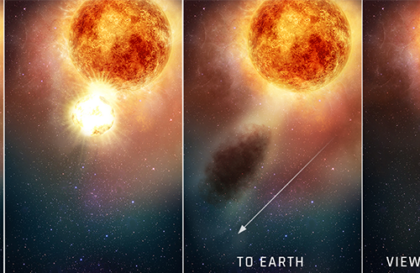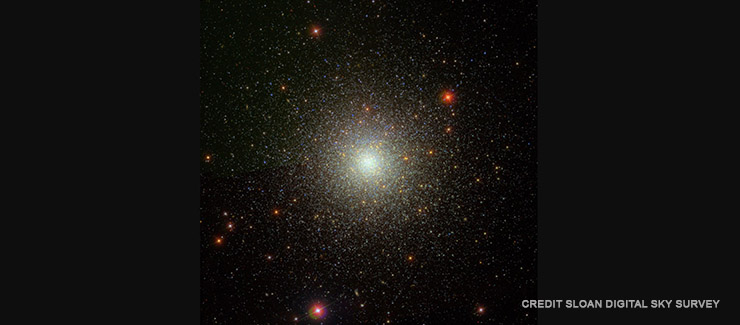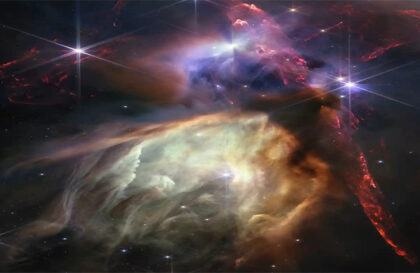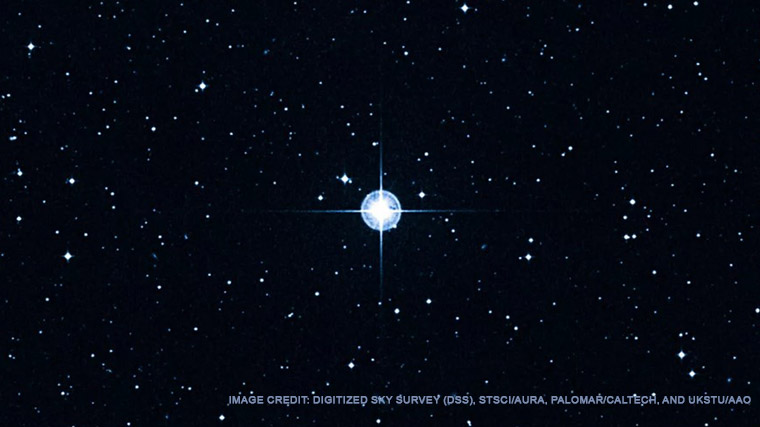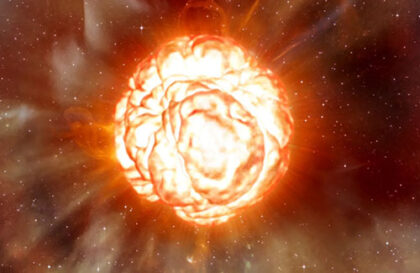The biggest black hole
The largest black hole has a mass exceeding the mass of the Sun by 66 billion times. It appeared in the universe in the earliest period of its existence, and now it powers one of the brightest quasars, radiating an insane amount of energy into space in the form of various types of radiation. The emission lines in the spectrum of TON 618 are unusually wide, which means that the gas in the accretion disk is moving at a very high speed, around 4,350 miles per second (7000 km/s).
The biggest galactic bubbles: Fermi Bubbles
In 2010, astronomers working with the Fermi space telescope discovered colossal structures that emerged from the depths of the Milky Way. These massive cosmic “blobs” are only visible at certain wavelengths of light and are about 25,000 light-years across, or a quarter the size of our galaxy. As scientists suggest, these bubbles are the consequences of a “very violent feast” of our central black hole Sagittarius A *, its huge “energy burp”.
Largest object: Protocluster SPT2349-56
When the age of the universe was a tenth of its current age, 14 galaxies approached each other and, under the influence of gravitational forces, began to collide, forming the SPT2349-56 protocluster.
The matter of all these galaxies is very densely packed in space. The protocluster occupies a volume only three times the size of the Milky Way. In the very distant future, all this accumulation of matter will form a new integral supergalaxy, the mass of which will be 10 trillion solar masses. After this happens, the central supergalaxy and its 50 satellite galaxies will form a giant object called a galaxy cluster. Perhaps it will be the largest.
Largest cluster of quasars: Huge-LQG
The super-bright cosmic objects powered by black holes, known as quasars, are already huge in their own right and contain oceans of energy. But sometimes a few quasars can coalesce into a cluster, held together by the gravitational forces of black holes. The largest of these clusters of quasars is Huge-LQG (Huge Large Quasar Group), whose size is 4 billion light years. This is almost 10% of the size of the universe. It contains 73 quasars, the total mass of which exceeds the mass of the Sun by 6.1 quintillion times (1 with 18 zeros).
The biggest thing in the universe
A galactic filament near the ClG J2143-4423 cluster. It is 300 million light-years long and 50 million light-years wide. The average distance from the Earth is 10.8 billion sv. years.
Galactic filaments are the largest observable cosmic structures in the universe in the form of filaments of galaxies with an average length of 50-80 megaparsecs (163-260 million light years), lying between voids (large voids). Threads and voids can form “great walls” – relatively flat complexes of clusters and superclusters. Galactic filaments are filled with very hot (millions and tens of millions of degrees) and very rarefied (1-10 atoms per m3) gas.
But all this information is inaccurate
The distances to most objects are inaccurate to varying degrees, which affects the determination of their size, and some objects have opaque dust shells and disks, or pulsate.
The universe is pulsating. Stars, galaxies, black holes, and other objects pulsate. Ripple changes their size. The palm passes from hand to hand.
Scientists, meanwhile, are getting more technologically advanced and accurate tools to determine the characteristics of space objects.
Image credit:
https://newatlas.com
https://www.sciencenews.org
https://skyandtelescope.org
https://www.sciencenews.org

